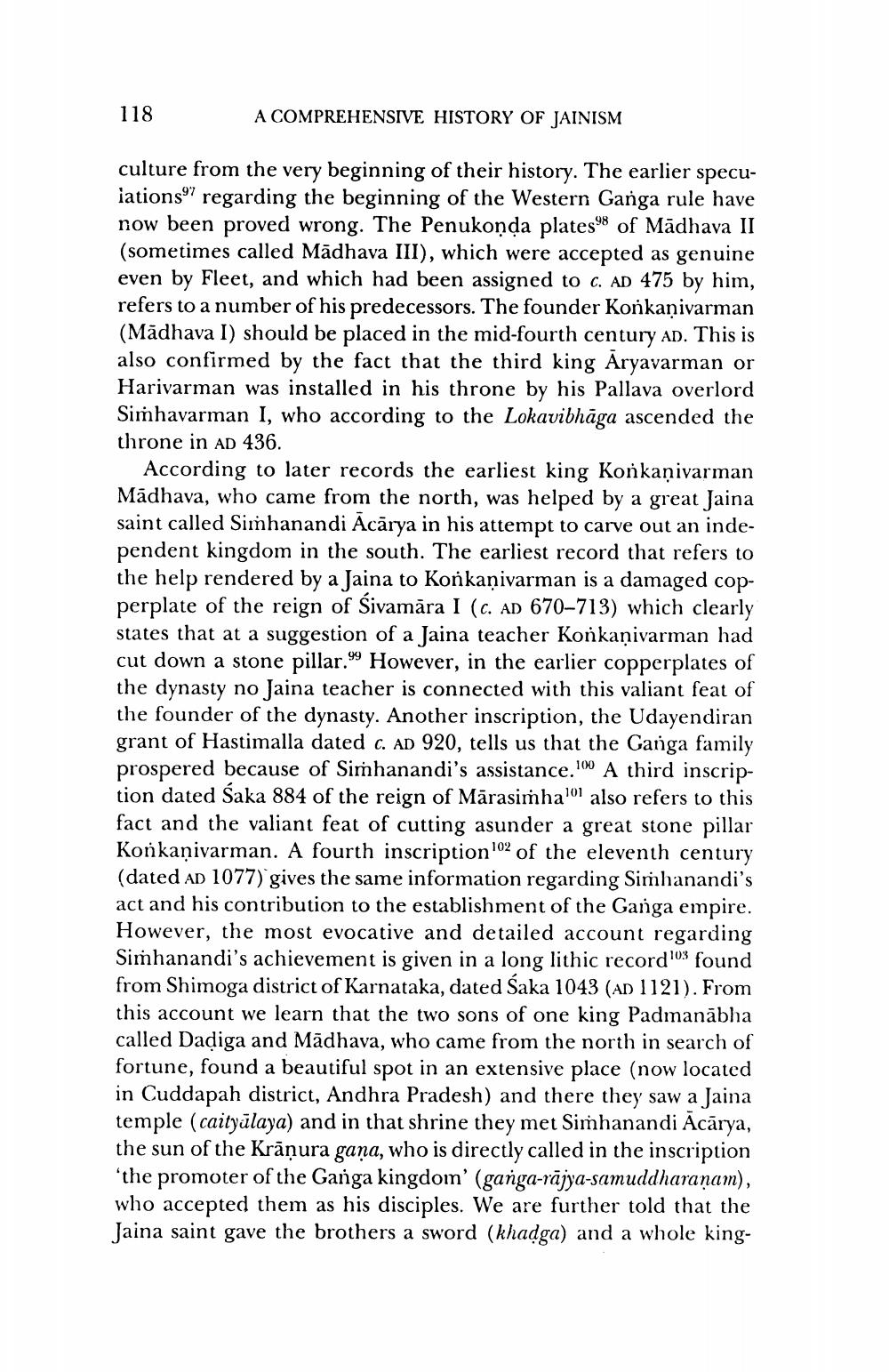________________
A COMPREHENSIVE HISTORY OF JAINISM
culture from the very beginning of their history. The earlier: specuiations regarding the beginning of the Western Ganga rule have now been proved wrong. The Penukonda plates of Madhava II (sometimes called Madhava III), which were accepted as genuine even by Fleet, and which had been assigned to c. AD 475 by him, refers to a number of his predecessors. The founder Konkanivarman (Madhava I) should be placed in the mid-fourth century AD. This is also confirmed by the fact that the third king Aryavarman or Harivarman was installed in his throne by his Pallava overlord Simhavarman I, who according to the Lokavibhāga ascended the throne in AD 436.
118
According to later records the earliest king Konkanivarman Madhava, who came from the north, was helped by a great Jaina saint called Simhanandi Acārya in his attempt to carve out an independent kingdom in the south. The earliest record that refers to the help rendered by a Jaina to Konkanivarman is a damaged copperplate of the reign of Śivamāra I (c. AD 670-713) which clearly states that at a suggestion of a Jaina teacher Konkanivarman had cut down a stone pillar.99 However, in the earlier copperplates of the dynasty no Jaina teacher is connected with this valiant feat of the founder of the dynasty. Another inscription, the Udayendiran grant of Hastimalla dated c. AD 920, tells us that the Ganga family prospered because of Simhanandi's assistance. 100 A third inscription dated Śaka 884 of the reign of Marasimha101 also refers to this fact and the valiant feat of cutting asunder a great stone pillar Konkanivarman. A fourth inscription 10% of the eleventh century (dated AD 1077) gives the same information regarding Simhanandi's act and his contribution to the establishment of the Ganga empire. However, the most evocative and detailed account regarding Simhanandi's achievement is given in a long lithic record 103 found from Shimoga district of Karnataka, dated Śaka 1043 (AD 1121). From this account we learn that the two sons of one king Padmanabha called Dadiga and Madhava, who came from the north in search of fortune, found a beautiful spot in an extensive place (now located in Cuddapah district, Andhra Pradesh) and there they saw a Jaina temple (caityalaya) and in that shrine they met Simhanandi Acārya, the sun of the Krāṇura gaṇa, who is directly called in the inscription 'the promoter of the Ganga kingdom' (ganga-rajya-samuddharaṇam), who accepted them as his disciples. We are further told that the Jaina saint gave the brothers a sword (khadga) and a whole king




